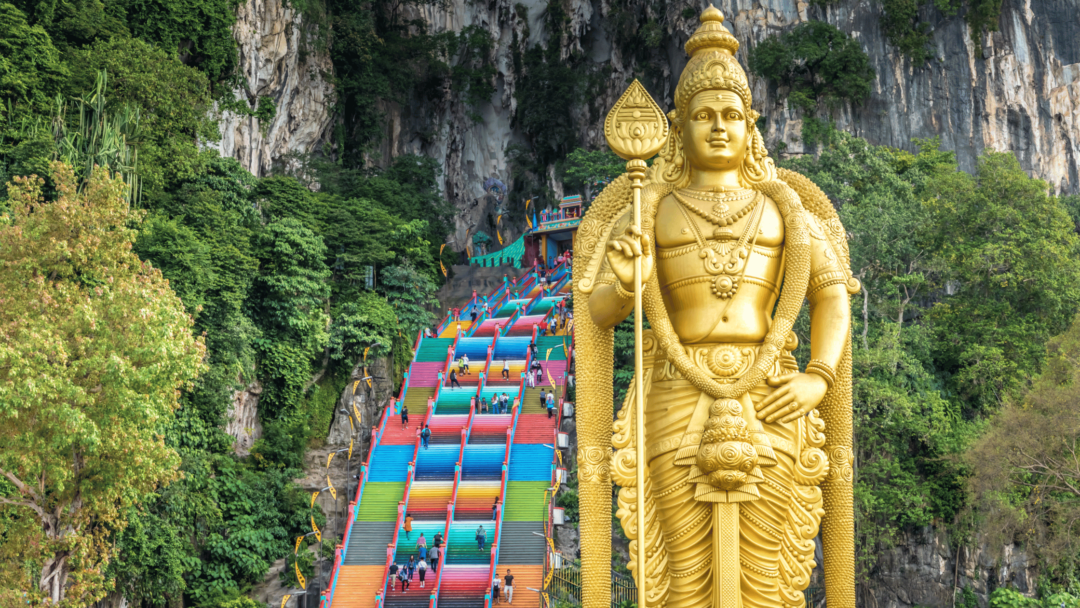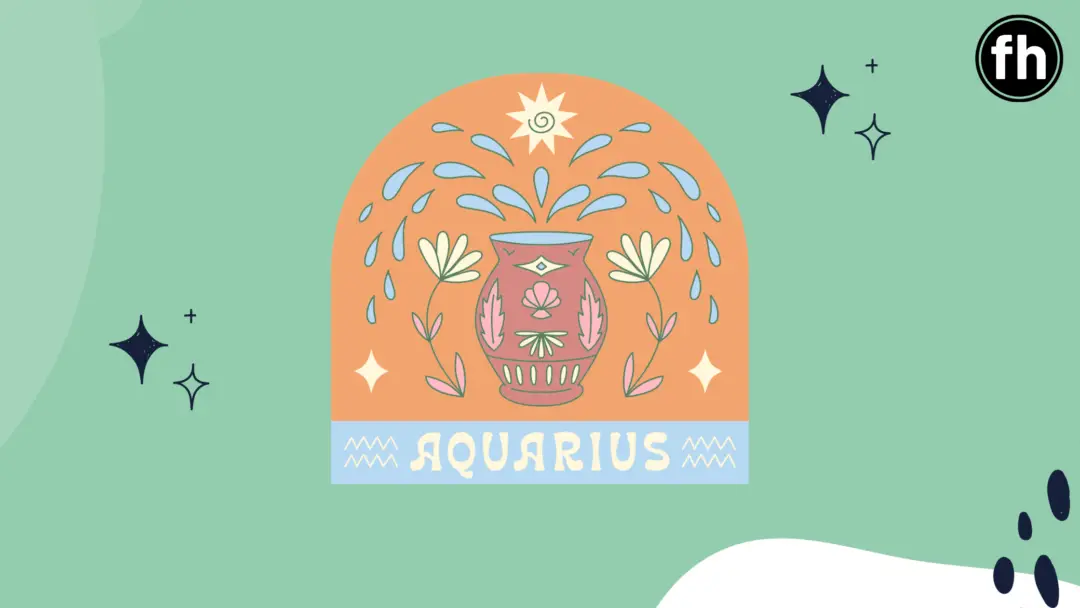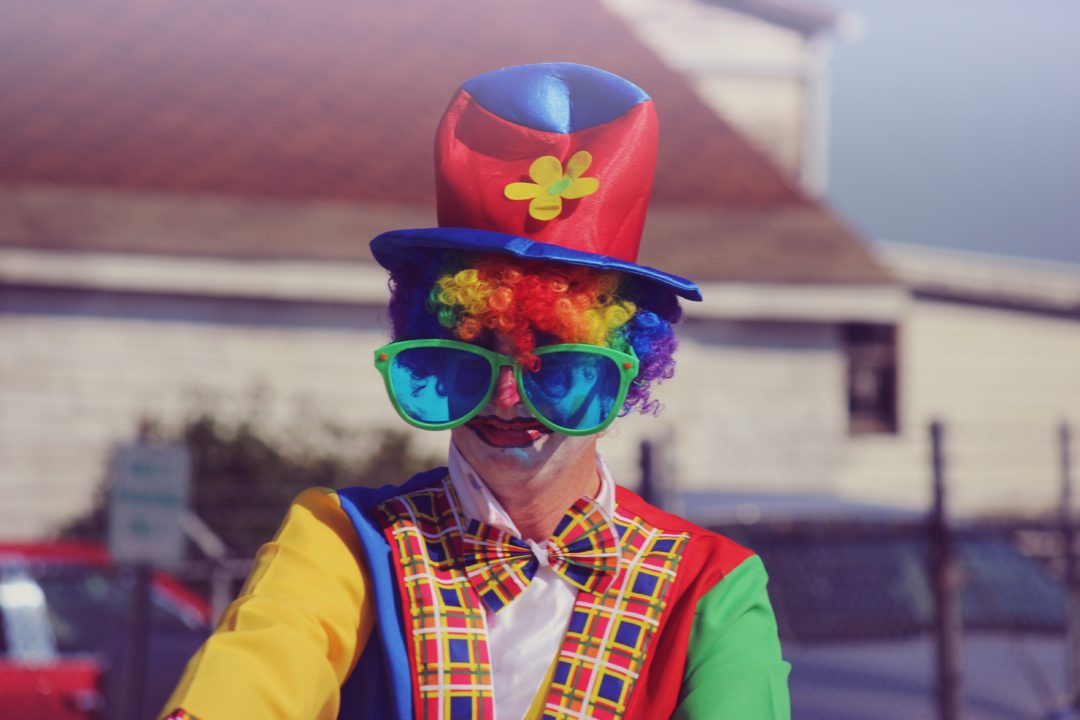Uruguay, nestled between Brazil and Argentina, offers a plethora of captivating hobbies that reveal its rich culture and history.
The most popular hobbies include enjoying Uruguay’s vibrant music and dance, such as Tango, exploring its unique museums, and partaking in local festivals.
These activities not only entertain but also provide deep insights into the country’s historical context and social fabric.

In Montevideo, the capital, you’ll find a wealth of experiences waiting for you. From the colorful Mercado del Puerto to the picturesque coastline, there’s something for every enthusiast.
Engage with the locals, savor delicious food, and immerse yourself in the atmosphere that makes Uruguay a unique destination in South America.
For history buffs, Uruguay’s museums are a treasure trove.
Visit the Museum of Tango, learn about the Carnival traditions, or explore the maritime history at the Sea Museum.
These activities pave the way for a deeper connection with Uruguay’s identity, blending history with engaging experiences.
Cultural Significance of Popular Hobbies

Uruguay hosts a vibrant mix of hobbies, each reflecting its rich cultural tapestry influenced by Indigenous, European, and African traditions.
Key activities like sipping Mate, enjoying an Asado, and engaging in Tango and Candombe encapsulate the spirit of Uruguayan culture.
The Tradition of Mate and Asado
Mate, a traditional herbal tea, holds a special place in Uruguayan social life. Sharing Mate is a communal activity, symbolizing friendship and openness.
You’ll often see people carrying thermos flasks and Mate gourds in public, showcasing its everyday significance.
Asado, or barbecue, is not just a culinary event but a social one.
Families and friends gather around the grill, cooking various meats slowly over wood or charcoal.
This practice underscores the importance of community and is a cherished way to celebrate weekends and holidays.
Tango: The Rhythm of Uruguay
Tango, often associated with Argentina, is equally integral to Uruguayan culture.
Originating in the late 19th century, Tango melds various influences, including European and African.
Its passionate dance style and evocative music capture a range of emotions, making it a beloved art form.
Uruguay’s capital, Montevideo, hosts numerous milongas, where you can experience authentic Tango.
Prominent figures such as Carlos Gardel have left an indelible mark, contributing to the genre’s development.
Tango represents a connection to the past while continually evolving.
Candombe: An African Heritage
Candombe is a vibrant drum-based music and dance that highlights Uruguay’s African heritage.
Rooted in the history of African slaves, it has become a cornerstone of cultural identity, especially among the Afro-Uruguayan community.
Performed primarily during Carnival in Montevideo, Candombe involves group drumming, dancing, and elaborate costumes.
Each element pays homage to the African ancestors and their legacy.
It’s not just an art form but a powerful expression of cultural preservation and identity.
Historical Context of Uruguayan Recreation

Uruguayan recreation has deep roots that trace back to colonial, indigenous, and traditional gaucho influences.
Understanding how these diverse elements shaped national pastimes provides a comprehensive view of the country’s vibrant culture.
Colonial Influence on Leisure Activities
The Spanish colonization significantly impacted Uruguay’s leisure activities.
Settlers in cities like Colonia del Sacramento, now a UNESCO World Heritage Site, introduced European sports and social activities.
Horse riding, influenced by Spanish aristocracy, became widespread. Visiting urban centers and enjoying promenades in plazas became popular among the elite.
Fiestas and carnival celebrations also began during colonial times.
These events featured parades, music, and dance, laying the foundation for the modern-day carnival in Montevideo.
Religious festivities brought processions that remain part of today’s cultural events.
The influence of these early settlers has woven European leisure practices into the fabric of Uruguayan society.
Indigenous Contributions to National Hobbies
Before European arrival, indigenous groups such as the Charrúa played a key role in the region’s recreational practices.
Activities like archery, running, and traditional ball games were common. These sports required physical prowess and were often tied to ceremonial events and hunting skills.
Traditional crafts have endured as a legacy of indigenous culture.
Weaving, pottery, and basket-making remain popular recreational activities.
These crafts provide a connection to Uruguay’s ancestral roots and offer tourists a glimpse into the country’s early history.
The integration of these ancient practices highlights Uruguay’s diverse cultural heritage.
Gaucho Festival: Celebrating Cowboy Culture
The gaucho, or South American cowboy, symbolizes the rural and rugged spirit of Uruguay.
Gauchos emerged during the colonial period, working on estancias (large cattle ranches) in the vast pampas.
Their skills in horse riding, cattle herding, and traditional music have become emblematic of Uruguayan identity.
The annual Gaucho Festival is a significant event, celebrating this heritage with rodeos, folk music, and dance.
Participants don traditional attire, including bombachas (pants), wide-brimmed hats, and boots.
The festival offers an immersive experience into the life and traditions of these iconic horsemen, underscoring the importance of the gaucho in Uruguay’s historical and cultural narrative.
Sports and Outdoor Recreation

Uruguay offers a variety of sports and outdoor activities for enthusiasts.
From the football fervor at iconic stadiums to coastal surfing destinations and picturesque hiking trails, there’s something for everyone.
Football Passion: Estadio Centenario
Football reigns supreme in Uruguay, with Estadio Centenario being a historic landmark for fans.
Located in Montevideo, this stadium hosted the first-ever FIFA World Cup in 1930. Today, it is home to the Uruguayan national team and various local clubs.
Tours of Estadio Centenario provide a glimpse into Uruguay’s rich football legacy.
You can explore the on-site museum, featuring memorabilia and exhibits on the country’s football history.
Watching a live match here is an unforgettable experience, surrounded by passionate fans chanting and supporting their teams.
Surfing and Beach Activities in Coastal Towns
The eastern coast of Uruguay is a haven for surfing and beach activities.
Notable surfing spots include La Barra near Punta del Este, La Paloma, La Pedrera, and Cabo Polonio. These coastal towns offer excellent waves, attracting surfers year-round.
In addition to surfing, these destinations are perfect for beach volleyball, swimming, and sunbathing.
Punta del Este, often called the “Riviera of South America,” is renowned for its upscale resorts and vibrant nightlife, making it a favorite among both locals and tourists.
Whether you’re a seasoned surfer or a beginner, Uruguay’s beaches provide the ideal setting for fun and relaxation.
Hiking and Camping Adventures
For those who enjoy hiking and camping, Uruguay’s landscapes offer breathtaking opportunities.
Cabo Polonio National Park is a standout destination, known for its unique sand dunes, rugged coastline, and diverse wildlife.
It’s a secluded area where you can truly connect with nature.
The Sierras of Uruguay are another excellent choice for outdoor adventures.
These regions provide stunning landscapes perfect for trekking, mountain biking, and canopy tours.
Whether you choose Cabo Polonio or the Sierras, Uruguay’s natural beauty offers ample opportunities for exploration and adventure, allowing you to experience the country’s diverse ecosystems up close.
Travelers’ Guide to Uruguay

Uruguay, with its blend of rich cultural heritage and picturesque landscapes, offers a memorable experience for travelers. Here’s how you can plan your trip effectively, find suitable accommodations, and navigate the transportation options available.
Planning Your Itinerary
When planning your itinerary to Uruguay, consider starting in Montevideo, the capital.
Explore its historical sites, including Plaza Independencia and the Mercado del Puerto.
From Montevideo, head to Punta del Este for its stunning beaches. Also, don’t miss Colonia del Sacramento, a UNESCO World Heritage site known for its charming colonial architecture.
Rural areas like Tacuarembó offer a glimpse into the gaucho lifestyle.
Aim to spend at least a week to experience the cultural nuances and scenic beauty.
Accommodation and Budget Tips
Uruguay offers various accommodation options to fit different budgets.
In cities like Montevideo and Punta del Este, you can find everything from luxury hotels to budget-friendly hostels.
For a more local experience, consider staying in boutiquey bed-and-breakfasts or renting an Airbnb.
Budget Tips:
- Book in advance to get better deals, especially during the peak summer months.
- Look for accommodations offering complimentary breakfast.
- Consider public transport or walking to save on travel costs within the cities.
- Travel insurance is also recommended for peace of mind.
Navigating Transportation Options
Uruguay has an efficient transportation network.
In Montevideo, the bus system is extensive and affordable. Intercity buses are the best way to travel between destinations; they are reliable and comfortable.
For reaching coastal areas, consider the direct bus routes, which are frequent and well-maintained.
If you’re interested in visiting Argentina, a ferry from Montevideo or Colonia del Sacramento to Buenos Aires can be an exciting part of your journey.
Renting a car is another option, providing greater flexibility to explore rural areas at your own pace. Always ensure your rental includes necessary travel insurance.
Iconic Sites and Landmarks

Uruguay offers a blend of modern urban attractions and preserved historical sites. These landmarks provide a deep insight into the country’s culture, history, and natural beauty.
Exploring Montevideo’s Rambla and Plaza Independencia
Montevideo’s Rambla stretches along the coast of the Río de la Plata, providing a scenic route for walking, cycling, and socializing.
This coastal promenade is a favorite among locals and tourists for its stunning views and vibrant atmosphere.
Plaza Independencia marks the heart of Montevideo, surrounded by significant buildings such as the Solís Theatre and the Palacio Salvo.
At the center of the plaza stands a monument dedicated to national hero José Gervasio Artigas. The statue is a focal point for cultural and historical commemorations.
Lighthouses and Beaches: Punta del Este to Cabo Polonio
Punta del Este is famed for its glamorous beaches and the Faro de Punta del Este, a lighthouse offering panoramic views.
The region’s beaches like Playa Brava and Playa Mansa are perfect for sunbathing, surfing, and enjoying beachside cafes.
Further east, Cabo Polonio is a secluded and rugged destination known for its picturesque lighthouse.
The area is devoid of electricity, creating a unique, serene environment.
Its remote beaches and sand dunes provide a quiet escape from the bustling tourist spots.
World Heritage Sites: From Colonia to Fray Bentos
The historic quarter of Colonia del Sacramento is a UNESCO World Heritage Site renowned for its cobbled streets and colonial architecture.
Founded by the Portuguese, its well-preserved buildings and museums offer a glimpse into the 17th-century colonial past.
In the west, Fray Bentos is home to another UNESCO World Heritage Site, the Fray Bentos Industrial Landscape.
This area centered around the former meatpacking plant known as El Anglo, showcases the country’s industrial heritage and its significant role in global meat production during the 19th and 20th centuries.
Uruguayan Gastronomy

Uruguayan cuisine boasts a unique blend of Spanish and Italian influences, offering a diverse array of dishes.
Renowned for its rich flavors and cultural significance, the country’s food scene is a must-experience for any culinary enthusiast visiting the country.
Local Delicacies: From Chivito to Dulce de Leche
Uruguay’s local delicacies reflect its cultural heritage.
Chivito, a hearty sandwich filled with steak, ham, cheese, and vegetables, is a national icon.
This dish is often accompanied by French fries and various sauces.
Dulce de Leche, a creamy caramel spread, is another popular treat that finds its way into various desserts such as cakes, pastries, and ice cream.
Its rich, sweet flavor is beloved by locals and visitors alike.
Vineyard Tours and Tasting Tannat
Uruguay is known for its vineyards and the famous Tannat wine.
Tannat grapes thrive in the country’s climate, producing robust red wines celebrated worldwide.
Many vineyards offer tours where you can explore the winemaking process, sample different vintages, and enjoy the scenic landscapes.
Visiting these vineyards provides an insight into Uruguayan wine culture and the significance of Tannat in the region.
Mercado del Puerto: A Culinary Landmark
In Montevideo, the Mercado del Puerto stands as a culinary landmark.
This bustling market is well-known for its barbecue offerings, especially asado—a traditional Uruguayan barbecue featuring various cuts of meat.
Strolling through the market, you will find numerous stalls and restaurants serving a myriad of local foods.
The lively atmosphere, combined with the aroma of grilled meats and the chatter of locals, makes it a must-visit for an authentic Uruguayan gastronomic experience.
Check out our Huge List of Food Hobbies for more awesome food and cooking-related hobby ideas!
Cultural Festivities and Events

Uruguay boasts a vibrant cultural tapestry reflected in its many festivities and events.
From the exuberance of Carnaval to the elegance of the Annual Tango Festival, there’s much to explore. Rural traditions and crafts fairs also reveal the country’s deep artisanal heritage.
Carnaval: Uruguay’s Most Exuberant Celebration
Carnaval in Uruguay is an event of grand proportions, celebrated with unrivaled enthusiasm.
Spanning over 40 days, it includes parades, colorful costumes, and lively music.
The capital city, Montevideo, is the epicenter of festivities, offering spectacular performances and murgas, a type of musical theater unique to the region.
Groups dress in elaborate costumes and compete in categories such as the parade of llamadas. Traditional rhythms, like candombe – of African origin – fill the streets, creating an infectious atmosphere of joy.
Annual Tango Festival
Uruguay shares a deep bond with tango, a genre often associated with its neighbor Argentina.
The Annual Tango Festival in Montevideo honors this connection through concerts, dance competitions, and workshops.
Montevideo’s historic neighborhoods, particularly Barrio Sur and Palermo, come alive with performances by world-class dancers and musicians.
Workshops are available for all skill levels, allowing you to immerse yourself in the dance’s rich heritage.
The festival’s highlight is the dance competition, where participants demonstrate their passion and finesse on the dance floor.
Rural Traditions and Crafts Fairs
Rural traditions and crafts fairs are integral to Uruguay’s cultural identity.
Events like the Feria de Tristán Narvaja showcase local artisans’ skills, with stalls offering handmade goods such as leatherwork, ceramics, and textiles.
These fairs often include traditional music and dance performances, providing a window into rural life and customs.
You can visit smaller towns and villages to experience local festivals where crafts remain central to community celebrations.
These events foster a sense of pride and continuity in Uruguay’s rich artisanal landscape, where skills are passed down through generations.
Exploring these fairs offers a unique chance to purchase authentic Uruguayan crafts and support local artisans.
Frequently Asked Questions

Uruguay’s culture is deeply influenced by its traditions, sports, cuisine, music, national celebrations, and art. These elements provide a rich cultural experience that is both unique and representative of the country’s heritage.
What are the key traditions that shape Uruguay’s cultural identity?
Key traditions in Uruguay include the national drink, mate, a strong cultural symbol.
Tango, shared with Argentina, is a dance deeply rooted in social gatherings.
Carnaval, with its vibrant parades and music, highlights the nation’s festive spirit.
Which sports are considered the most beloved in Uruguay?
Football (soccer) reigns supreme in Uruguay.
The country holds pride in its successful national team and numerous local clubs. Rugby and basketball also enjoy significant popularity among Uruguayans.
How does cuisine reflect the cultural heritage of Uruguay?
Uruguayan cuisine features dishes like asado (barbecue), which is a social event as much as a meal.
Chivito, a sandwich loaded with various toppings, is another staple.
The prominence of beef and grilling speaks to the country’s gaucho traditions.
What genres of music are intrinsic to the cultural scene in Uruguay?
Candombe, originating from African slaves, is essential to Uruguay’s musical landscape, particularly during Carnaval.
Tango and milonga are also significant, reflecting the country’s historical and cultural ties.
In what ways are national celebrations reflective of Uruguay’s history and culture?
National celebrations, like Independence Day on August 25 and Carnaval, showcase Uruguay’s history and social values.
These events emphasize community, heritage, and the diverse cultural influences that have shaped the nation.
What unique aspects of art can be found in Uruguay and how do they represent the country?
Uruguayan art includes vibrant murals and sculptures. Artists like Joaquín Torres-García have influenced modern and abstract styles. These artworks often reflect the country’s integration of indigenous, African, and European cultural elements.




